Morphogen Nutrition is one of the supplement industry's stars for good reason. With formulator extraordinaire Ben Hartman at the wheel, Morphogen has consistently put out cutting-edge, hard-hitting products.
Ben's been a PricePlow Podcast guest not once, but twice. In 2020 he joined us for a discussion about Morphogen's approach to formula design and in 2022, he returned to talk packaging and label design.
When it comes to Morphogen, most people think of their incredible training formulas, centered by the phenomenal AlphaGen pre-workout (with ten grams of L-tyrosine!), Synthegen intra-workout / amino matrix, and Hydragen sodium-rich hydration supplement, all perfect for those aggressive training sessions.
But Morphogen's health formulas are just as meaningful, if not more - especially the one covered today:
Introducing PRIME Full Spectrum Organ Health
Today we're talking about PRIME, Morphogen's awesome take on a general health and wellness supplement. It's been renamed from MorphoPRIME, and definitely lives up to its name, with an emphasis on one crucial organ in particular, but it truly hits so many mission-critical systems.
Ben Hartman has an incredible backstory on this one as well -- we get it into it below before digging deeper into the ingredients. First, let's check on PricePlow's coupon-powered prices and get you signed up for more Morphogen Nutrition updates, then head into that background:
Morphogen Nutrition PRIME - Full Spectrum Organ Health – Deals and Price Drop Alerts
Get Price Alerts
No spam, no scams.
Disclosure: PricePlow relies on pricing from stores with which we have a business relationship. We work hard to keep pricing current, but you may find a better offer.
Posts are sponsored in part by the retailers and/or brands listed on this page.
This area is reserved for Team PricePlow's upcoming videos.
Subscribe to our channel and sign up for notifications so you catch it when it goes live!
Morphogen PRIME: Ben Hartman's Backstory
On February 11th, 2021, Ben posted on his Instagram the following:
No better supplement comes than one that's built for necessity -- especially when it's for family. Ben formulated the original MorphoPRIME for his father, after tiring of mixing and matching too many other formulas.
"Why couldn't any company just make the perfect product?"
Well, sometimes you have to answer your own question. The answer to Ben's question, with regards to organ health and cardiovascular support, is below:
Morphogen PRIME Ingredients
In a single 6-capsule serving of PRIME Full Spectrum Organ Health from Morphogen Nutrition, you get the following:
-
CardioAid Plant Sterol Esters (std. min. 95% plant sterols; beta-sitosterol, campesterol, stigmasterol, brassicasterol, beta-sitostanol) – 800 mg
PRIME is basically six supplements in one -- but at a way better price than putting them together separately!
CardioAid is a blend of sterol esters that have the potential to significantly improve your blood cholesterol profile.
Although there still isn't a definitive consensus on how exactly sterol esters do this, several explanations have been proposed, including mechanically displacing micellar forms of dietary cholesterol from being taken by enterocyte cells,[1] downregulating cholesterol-sensitive receptors in the enterocyte lining,[2] or by inhibiting the esterification of cholesterol within the enterocyte lining (a key step in whole-body cholesterol transport).[3]
The common denominator underlying all these explanations is sterol esters' structural similarity to the cholesterol molecule.[1-3] It's this similarity that enables sterols to interfere with cholesterol uptake and transport by literally or figuratively crowding out dietary cholesterol in your digestive tract.
This isn't just theoretical either. According to a 2013 meta-analysis that examined eight human clinical trials of plant sterol supplementation, doses ranging from 1 gram/day to 3 grams/day lowered cholesterol by an average 12 mg/dL,[4] which is definitely nothing to sneeze at.
Notes on the dose
While we don't have quite a whole gram of plant sterol esters in one serving of PRIME per that meta-analysis above, at 800 milligrams, it's pretty close. Besides, Ben Hartman told us that CardioAid themselves suggests 800mg active sterols, so at 95% standardization, we're extraordinarily close to that.
It's also worth noting that in the studies examined by the meta-analysis, the study with the lowest dose still showed a reduction in cholesterol on the order of approximately 12 mg/dL.[4,5] Point being, we're very confident that 800 milligrams -- more than a capsule's worth -- can move the needle on its own, and we still have plenty of ingredients to support it below:
-
NAC (N-acetyl-L-cysteine) – 600 mg
N-acetyl-L-cysteine (also known as N-acetyl-cysteine or simply NAC) is a direct precursor to glutathione (GSH), your body's master antioxidant.[6] Supplementing with NAC is a better strategy for upregulating GSH than taking GSH itself – this is because the oral bioavailability of NAC is much higher than that of GSH.[7]
The amino acid cysteine bound to NAC is the actual GSH precursor, but taking an acetylated form of cysteine rather than pure L-cysteine is important because the acetyl group spares cysteine from first pass metabolism,[8,9] which dramatically increases cysteine's bioavailability.
According to a 2017 research review on NAC supplementation, it can:[10]
- Improve PCOS symptoms
- Decrease risk of premature birth and miscarriage
- Protect the liver from acetaminophen-induced damage
- Improve fertility
- Improve bronchitis symptoms
- Support peak muscle performance
- Support hemodialysis
- Improve asthma symptoms
- Decrease risk of neurodegenerative illness
The ability of NAC to protect the liver from acetaminophen should be of particular interest for the average supplement consumer,[11] as everyday modern life and certain forms of athletic training can pose significant risks to liver health.
Amazingly, NAC seems to protect healthy cells from damage by certain chemotherapy drugs, without protecting cancerous cells.[12-14] It can also prevent DNA against damage from certain illnesses and treatments.[13]
Also important to Morphogen customers, there's even evidence that the reduction of cellular oxidative stress from NAC could increase health and performance.[15]
Immunity
Given the crucial role that GSH plays in immune function,[17] it's probably not much of a surprise that NAC supplementation can enhance immune function[18,19] and even prevent viral replication.[20] Importantly this decade, taking NAC has been shown to manage symptoms associated with SARS-CoV-2.[16,21]
Cardiovascular
Supplemental cysteine has also been shown to possess cardioprotective properties.[22]
NAC and drinking
Finally, you probably know someone who swears by NAC as a prophylactic against hangovers. As it turns out, there's a solid scientific basis for this practice – NAC has been shown to protect the liver from alcohol-induced damage as well.[23-25] This can mean more efficient alcohol detoxification and recovery and, thus, less severe symptoms the day after heavy drinking.
That being said, we don't endorse heavy drinking, with or without NAC!
Know the NAC story
Overall, NAC is a powerhouse ingredient that everyone should know about, both for health and historical/legal reasons. We've previously written about how the FDA very suspiciously tried to ban NAC from use in dietary supplements in 2021, but was thwarted by the Natural Products Association (NPA), as it's been sold as a dietary supplement before 1994, grandfathering it into dietary supplements as an "old dietary ingredient". Extremely safe, legal, and effective.
-
Red Yeast Rice powder (Monascus purpureus) (grain) – 600 mg
Red yeast rice is another cardioprotective ingredient. Just like CardioAid plant sterols, it helps reduce blood cholesterol levels.[26]
One study found that taking a proprietary blend of sterols and red yeast rice for six weeks reduced total cholesterol by an impressive 46 mg/dL and LDL cholesterol by an especially impressive 53 mg/dL.[27]
Another study found that the combination of sterols and red yeast rice did much better than either supplement alone – the combination reduced LDL-cholesterol by 27% while phytosterols alone did nothing, and red yeast rice alone conferred only a 20% reduction.[28] The combination also reduced apolipoprotein B (ApoB) by 19% versus only 14.4% for the red yeast rice group.[28]
If you're catching on by now, you're seeing that these are Morphogen-style doses -- it's no wonder why this is a six capsule product! The first five ingredients each basically take up an entire capsule on their own. PRIME is no middling formula.
-
Arjuna extract (Terminalia arjuna) (bark) (std. to 20% polyphenols) – 500 mg
A new plant extract always excites us. Looks like this can help boost VO2max for athletes, but also improve cardiac function as well
The arjuna tree is native to the Indian subcontinent and has long been used in Ayurvedic medicine to manage cardiovascular conditions like hypertension, congestive heart failure, chest pain, and dyslipidemia.[29]
Arjuna is naturally rich in powerful phytochemicals like triterpenoids, flavonoids, glycosides and β-sitosterol (one of the plant sterols present in CardioAid described above).[29] The triterpenoids and flavonoids in arjuna seem to be responsible for the lion's share of its benefits, though.[29]
A randomized controlled trial found that two months of supplementation with 500 milligrams/day of arjuna extract, in conjunction with allopathic treatment, can improve cardiac function more than standard medication alone.[30] This is the dose Hartman put into PRIME, so you can be confident that they're working hard to get you research-backed ingredients.
Another study with the same dose and treatment duration showed a significant improvement in VO2max and systolic blood pressure.[31]
-
Citrus Bergamot extract (Citrus bergamia) (fruit) (5:1) – 500 mg
Citrus bergamot has been shown to support immunity and cardiovascular function. This is thanks to its high concentration of flavonoids and other phytochemicals like glucosides, melitidin, neoeriocitrin, neohesperidin, rutin, brutieridin, and naringin,[32] which have been shown to possess anti-inflammatory, antioxidant, and cholesterol-lowering properties.[32]
There's far more bergamot research studies than you'd expect, and nearly all of it has some kind of positive outcome![33]
In folk medicine, bergamot has been used to manage fever, sore throat, and mild infections.[32]
Its flavonoids are particularly good for preventing LDL oxidation, while lowering the amount of LDL and total cholesterol in the blood. Bergamot can also increase HDL cholesterol, the good kind of cholesterol.[32] We've gone on the record many times to state that high HDL and low triglycerides are far better biomarkers to strive for than LDL alone.[34-38] However, there are very few compounds that can safely increase HDL - but citrus bergamot is one of them.
The mechanisms of action behind bergamot's beneficial effects seem to be AMPK upregulation and pancreatic cholesterol ester hydrolase (pCEH) inhibition,[39] but further research is needed to verify this.
-
Curcumin from Turmeric extract (Curcuma longa) (root) (std. min 95% curcuminoids) – 500 mg
Turmeric is an orange-yellow spice that's a close relative of ginger. Turmeric has been used for hundreds, if not thousands, of years in traditional Chinese medicine (TCM) and Ayurvedic medicine to manage a wide variety of conditions.[40,41]
Ben Hartman returns to talk about Morphogen Nutrition's rebrand, some new formulas, and more on his backstory. Watch it in Episode #063 of the PricePlow Podcast!
Curcumin, the primary bioactive constituent of turmeric that provides its orange color, has been shown to have powerful anti-inflammatory and anti-microbial effects.[42-44] There's seemingly no aspect of health that can't be at least slightly improved by curcumin supplementation – the list even includes heavy-hitter diseases of civilization like depression, cancer, and diabetes.[42-44]
Curcumin seems particularly good at enhancing immune function, thanks to its ability to support T cells, B cells, macrophages, neutrophils, NK cells, and dendritic cells.[40,41]
No matter what you're looking to do with your health, curcumin can play a role, and belongs in a supplement like PRIME. Entire books have been written about turmeric, and there are numerous reasons to take it - most of them supported by its anti-inflammatory mechanisms.
To put it succinctly, one peer-reviewed study refers to curcumin as a "nature-made Jack-of-all-trades".[44] It's a must-have in a supplement like PRIME, and Morphogen is using a powerful standardization that's further amplified by black pepper extract described below.
-
Grape Seed extract (Vitis vinifera)(seed)(std. min. 90% polyphenols) – 300 mg
Grape seed extract (GSE) is a powerful supplement for improving circulation and cardiovascular function. It's rich in antioxidant compounds like phenolic acids, flavonoids, and proanthocyanidins.[45]
Just look at this amino acid formula! Morphogen Nutrition Synthegen is a powerhouse intraworkout (and/or recovery) supplement from top to bottom!
Proanthocyanidin polyphenols are doing most of the heavy lifting here – they've been shown to possess antioxidant, antidiabetic, anticancer, antimicrobial, antitumor, immunomodulatory, anti-inflammatory, cardioprotective, and neuroprotective properties.[45]
Proanthocyanidins can also trigger vasodilation by causing endothelial cells to release nitric oxide (NO).[45] Research shows that GSE supplements can:[46-52]
- Improve circulation
- Lower blood pressure
- Decrease oxidative stress
- Increase bone mineral density
- Support liver, kidney, and brain health
-
Milk Thistle powder (Silybum marianum) (seed) – 250 mg
Milk thistle is probably the most popular liver-protective nutritional supplement. Its primary bioactive constituent, silymarin, gets most of the credit for this – what few know is that silymarin isn't a single compound, but a cluster of three flavonolignans called silydianin, silibinin, and silychristin.[53]
Research shows that milk thistle supplementation can:
- Protect the liver from drug-induced disease[54-56]
- Help restore liver function after alcohol abuse[57-62]
- Protect against general liver toxicity[63-65]
- Protect against specific environmental toxins[66]
- Manage liver disease[67,68]
As amazing as milk thistle is, we'd be remiss if we didn't remind readers that removing the source of liver injury is always a better solution than adding supplements.
-
Ubiquinol (Coenzyme Q10) – 100 mg
Coenzyme Q10 (CoQ10) is an antioxidant compound that's particularly good for improving mitochondrial health.
Morphogen is staking out a claim for themselves as meticulous supplement engineers, which can be seen clearly with their AlphaGen pre-workout formula.
Mitochondrial health is of paramount importance since your mitochondria produce all of your body's usable energy as adenosine triphosphate (ATP). Mitochondrial dysfunction induced by CoQ10 deficiency has been associated with illnesses like diabetes, cancer, dementia, and cardiovascular disease.[69]
One of the ways CoQ10 can improve cardiovascular function is by stabilizing the nitric oxide (NO) molecule, protecting it from degradation via oxidative stress. This ultimately increases NO's action and upregulates vasodilation, thus helping keep blood pressure and heart rate within appropriate ranges.[70]
-
AstraGin (Purified and fractionated extracts from Panax notoginseng and Astragalus membranaceus (root)) – 50 mg
AstraGin is a patented bioavailability enhancer.[71-75] This means it increases the effectiveness of all the other ingredients in PRIME by increasing their bioavailability. It increases bioavailability by boosting ATP production in your intestinal cells. With more ATP comes a greater capacity for work – specifically, moving nutrients through the intestinal wall and into your bloodstream.[76,77] In other words, you'll absorb more of the nutrients you ingest.
AstraGin can even help repair intestinal tissue, which is another way that it can improve digestive function.[78] It's is a great way to maximize your value per dollar, but it's not the only bioavailability enhancement ingredient inside.
Yet Hartman decided to double down: not only does PRIME have a large dose of AstraGin (we often only see 25 milligrams but have 50 here), we have another in BioPerine below as well!
-
BioPerine Nature's Thermonutrient – 20 mg
BioPerine is another patented bioavailability enhancer,[79-82] with a different mechanism of action than AstraGin's. It's from black pepper extract, and is standardized to 95% piperine, the bioactive constituent inside. While AstraGin improves digestive function, BioPerine actually inhibits certain enzymes that can prematurely break down nutrients before absorption.[83]
Bioperine is the trusted, trademarked form of black pepper extract that promises 95% or greater piperine, the part of black pepper with all the activity!
It can also upregulate glucose transporter 4 (GLUT4),[84] increase insulin sensitivity and liver health,[85] and exert powerful antioxidant effects.[86]
It's been shown to work incredibly well with curcumin, which we also have here -- and by "incredible", we mean a 2000% increase in absorption![87]
What's also impressive (yet unsurprising) is the dosage here. We often see 5, maybe 10 milligrams of Bioperine. Not here, though! Morphogen goes 4x the standard amount with an epic 20 milligram dose. Once again, PRIME is no joke!
Dosage and Timing
Six capsules is a lot for some, which is why the PRIME label states that your doses can be divided -- but are preferably taken with food.
PRIME: A Supplement with Meaning
PRIME Full Spectrum Organ Health is a great formula for health. An initial look at the price tag may seem like a lot, until you realize that you're getting multiple supplements inside. Over the past few years, we've seen some scam-artist brands charge more than this for the NAC dose alone. Ben Hartman and his team at Morphogen don't play that way. This supplement is a steal, especially if you're looking for cardiovascular or liver health.
Beyond cardiovascular health, the emphasis also seems to be on liver health with ingredients like GSE, NAC and milk thistle, and we think this is a good strategy given the central role liver detoxification plays in long-term wellness.
The other big focus here is on maintaining cholesterol levels, which is obviously another great wellness strategy. CardioAid is a particularly interesting ingredient in this regard. And with regards to citrus bergamot, our heads turn whenever we see any natural ingredient boost HDL levels.
What a wonderful supplement with an even more wonderful backstory. This is how it's done - with passion and purpose.
Morphogen Nutrition PRIME - Full Spectrum Organ Health – Deals and Price Drop Alerts
Get Price Alerts
No spam, no scams.
Disclosure: PricePlow relies on pricing from stores with which we have a business relationship. We work hard to keep pricing current, but you may find a better offer.
Posts are sponsored in part by the retailers and/or brands listed on this page.
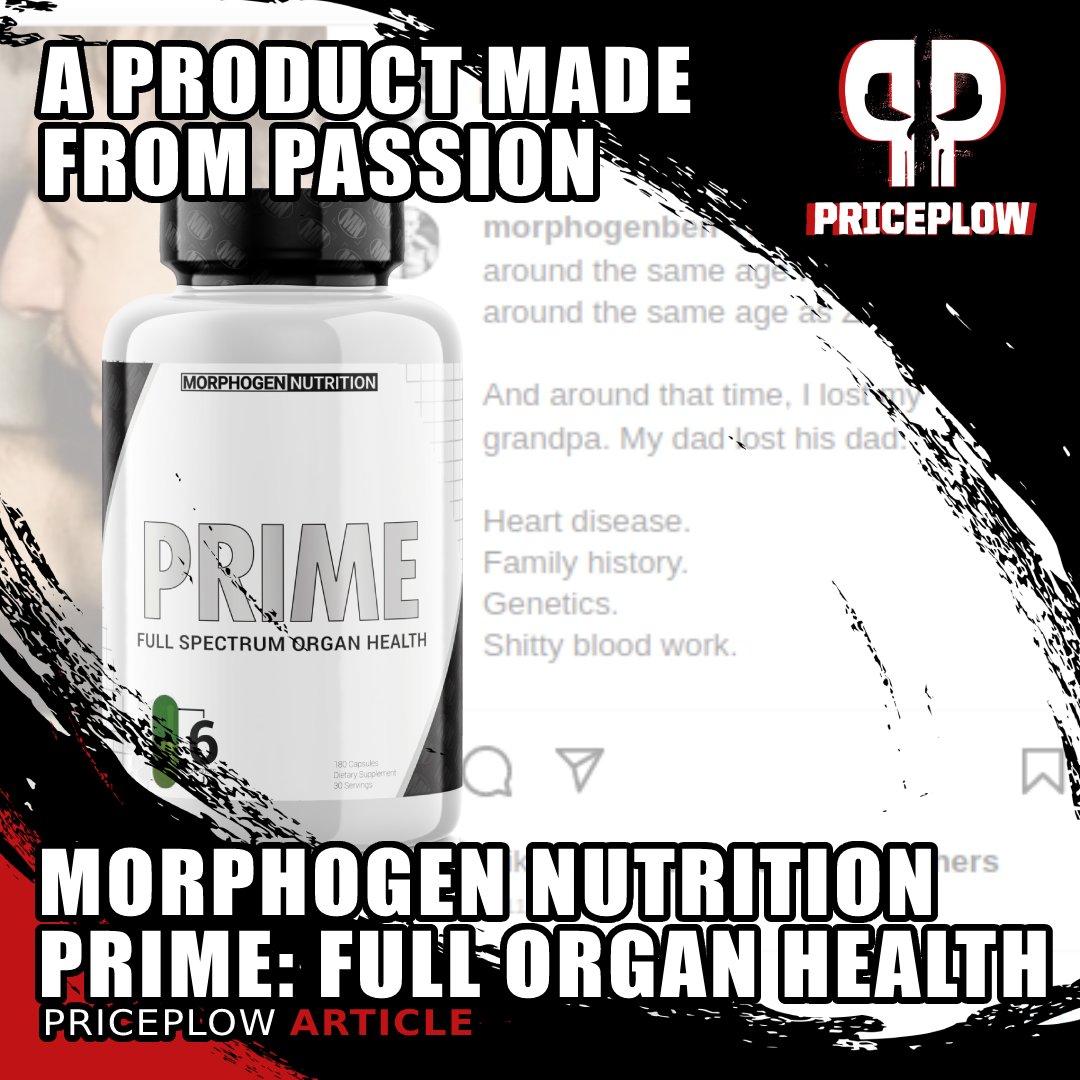
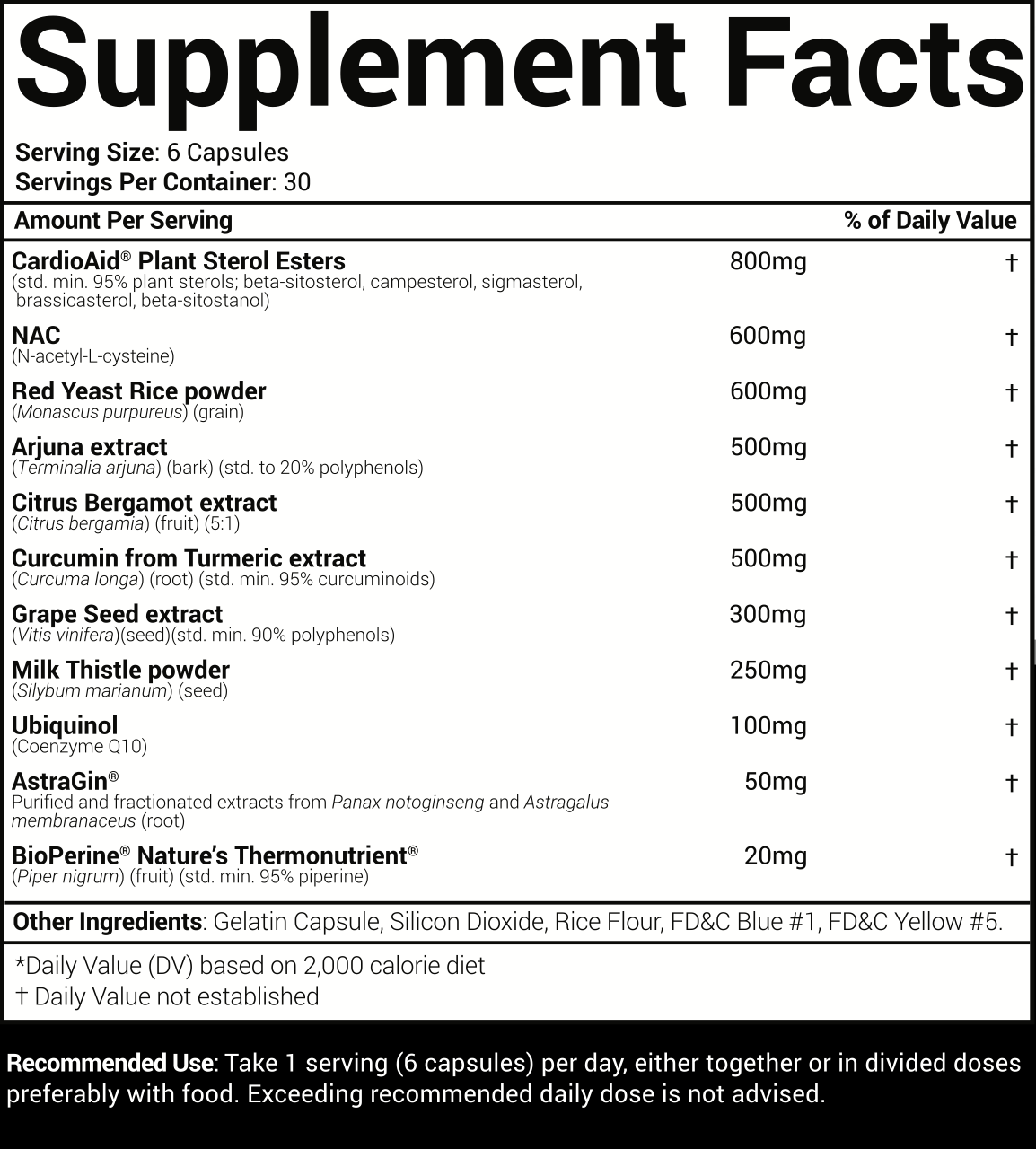
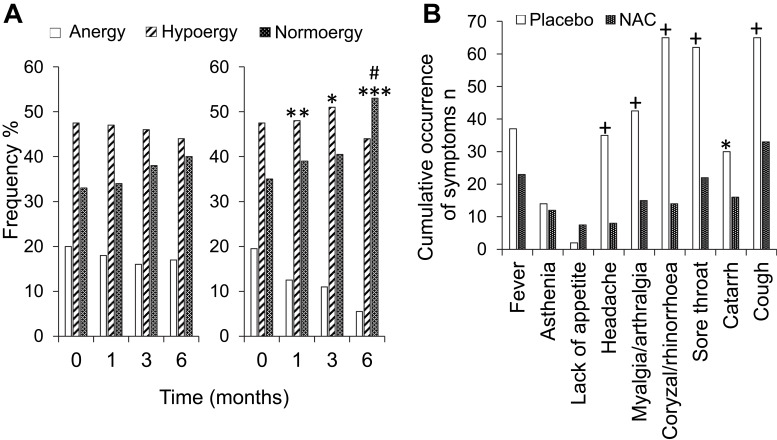
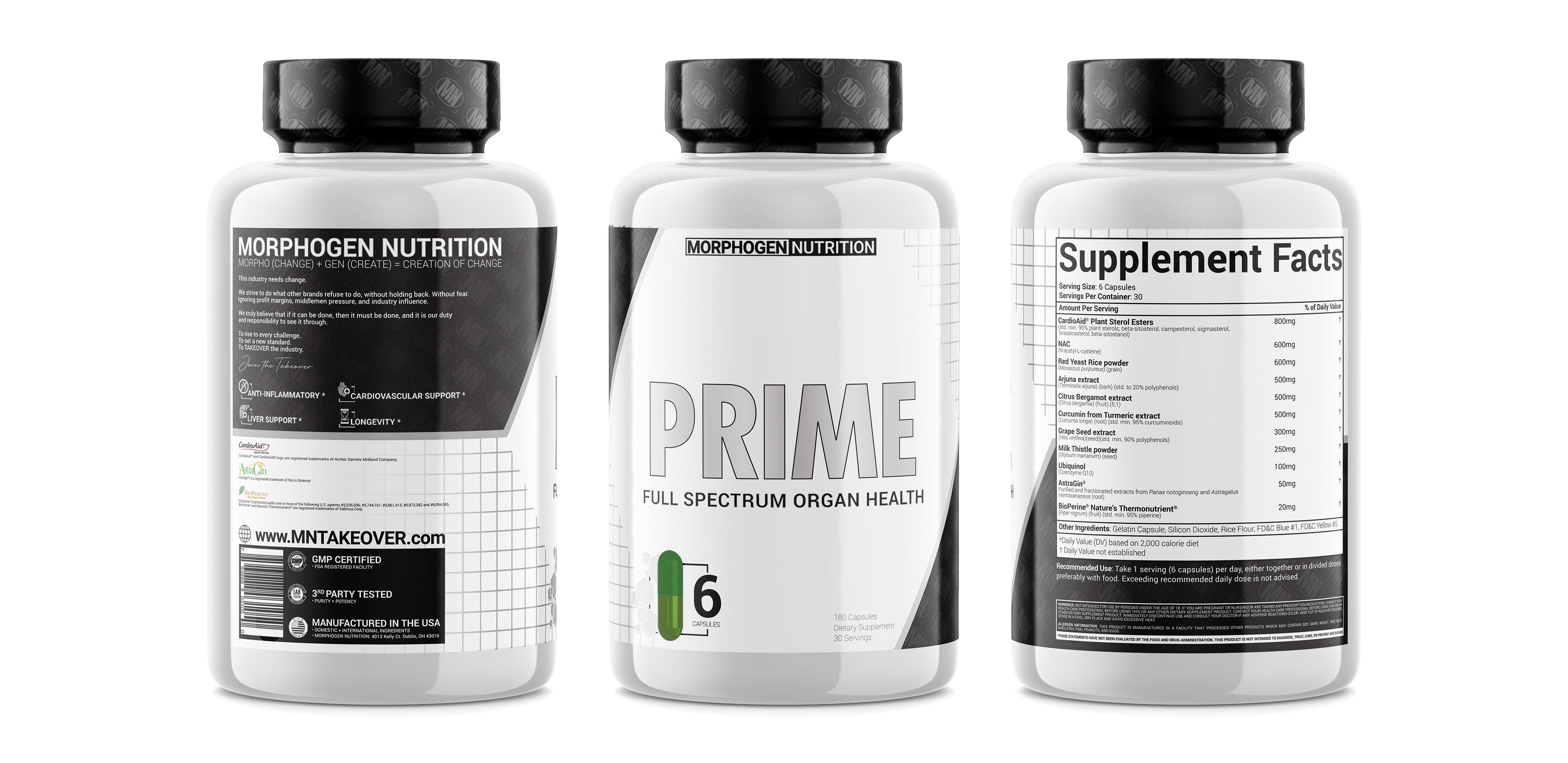
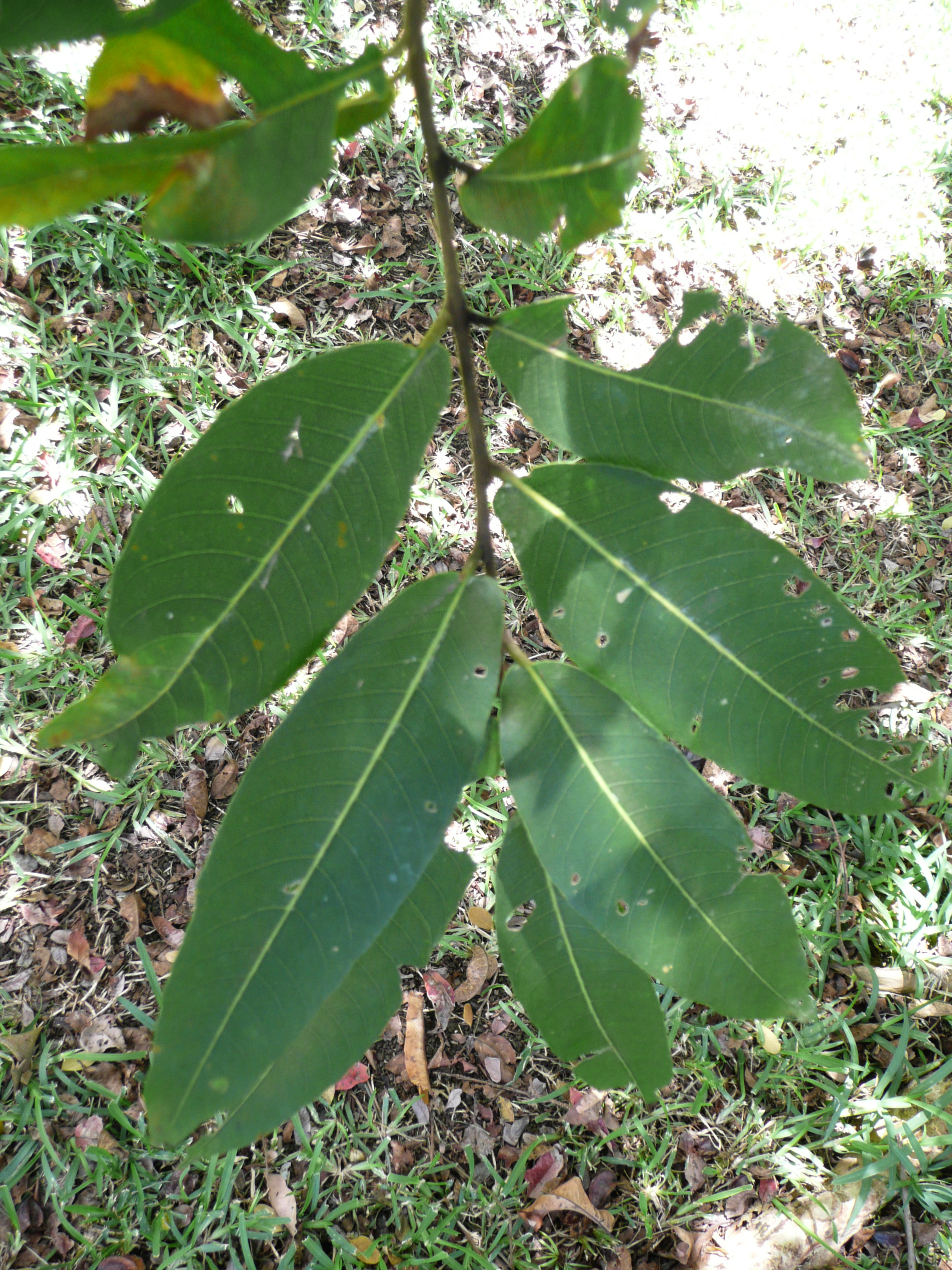

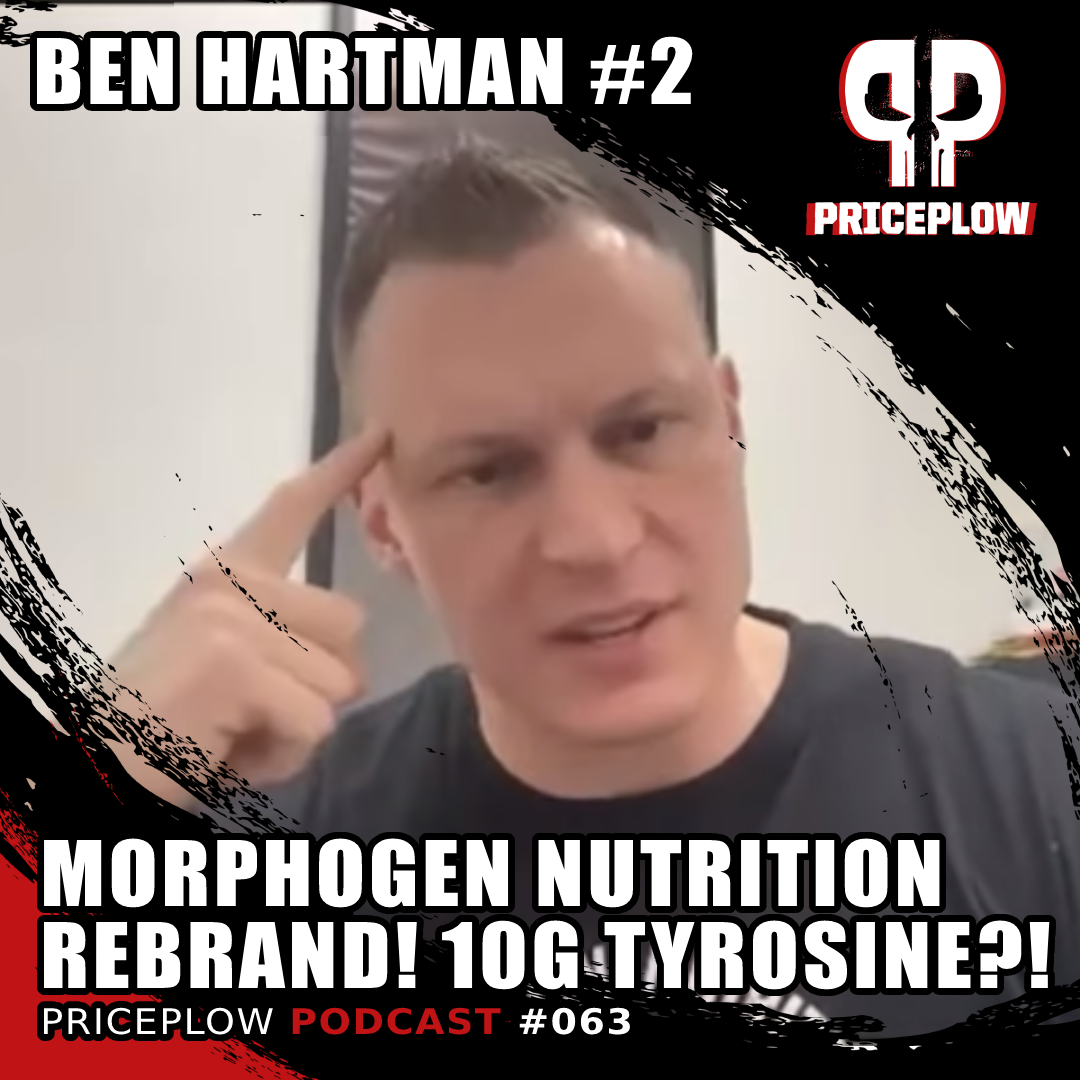
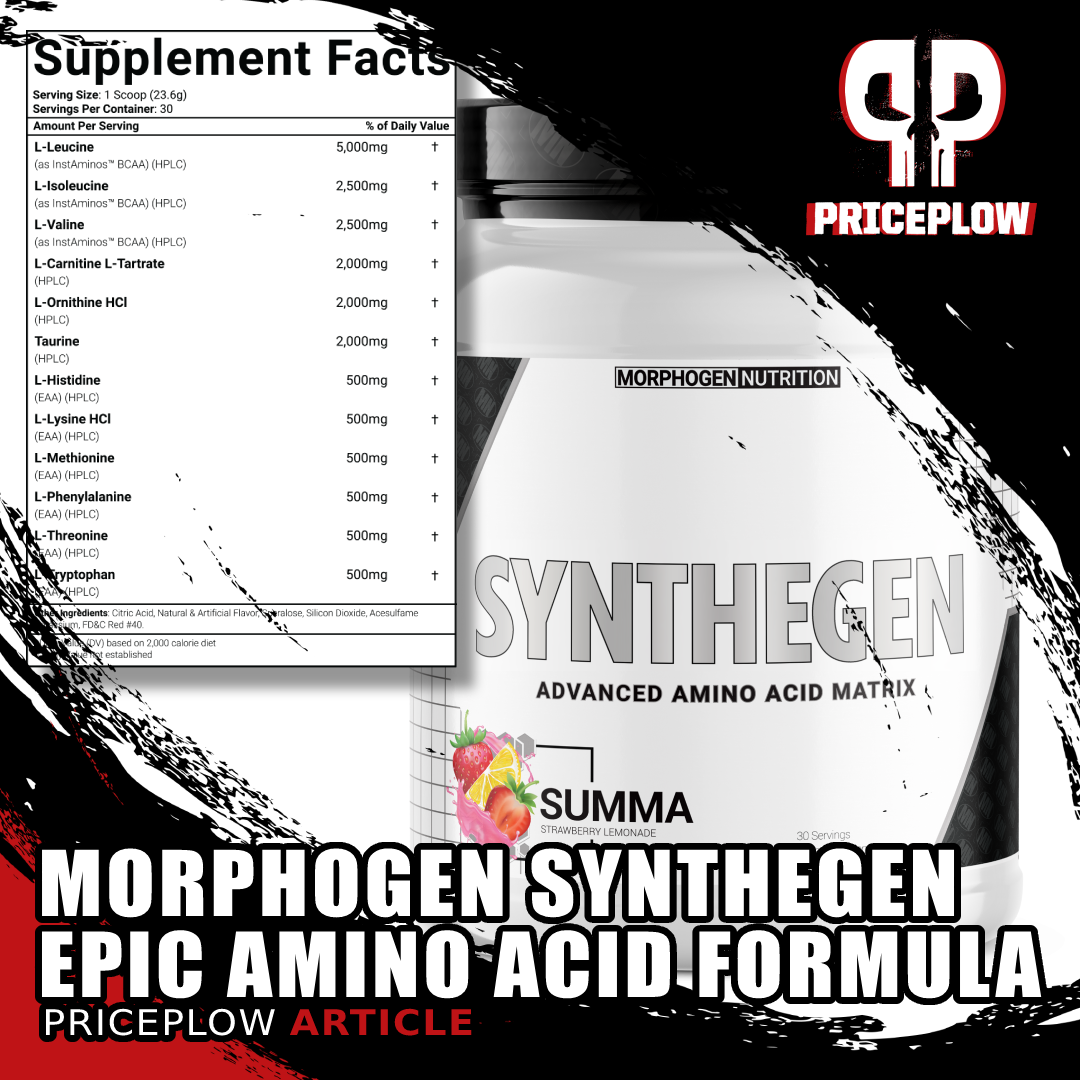
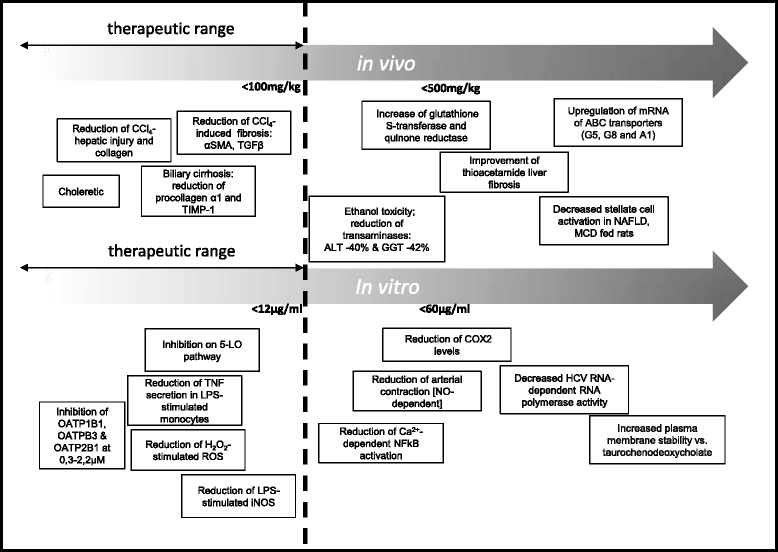
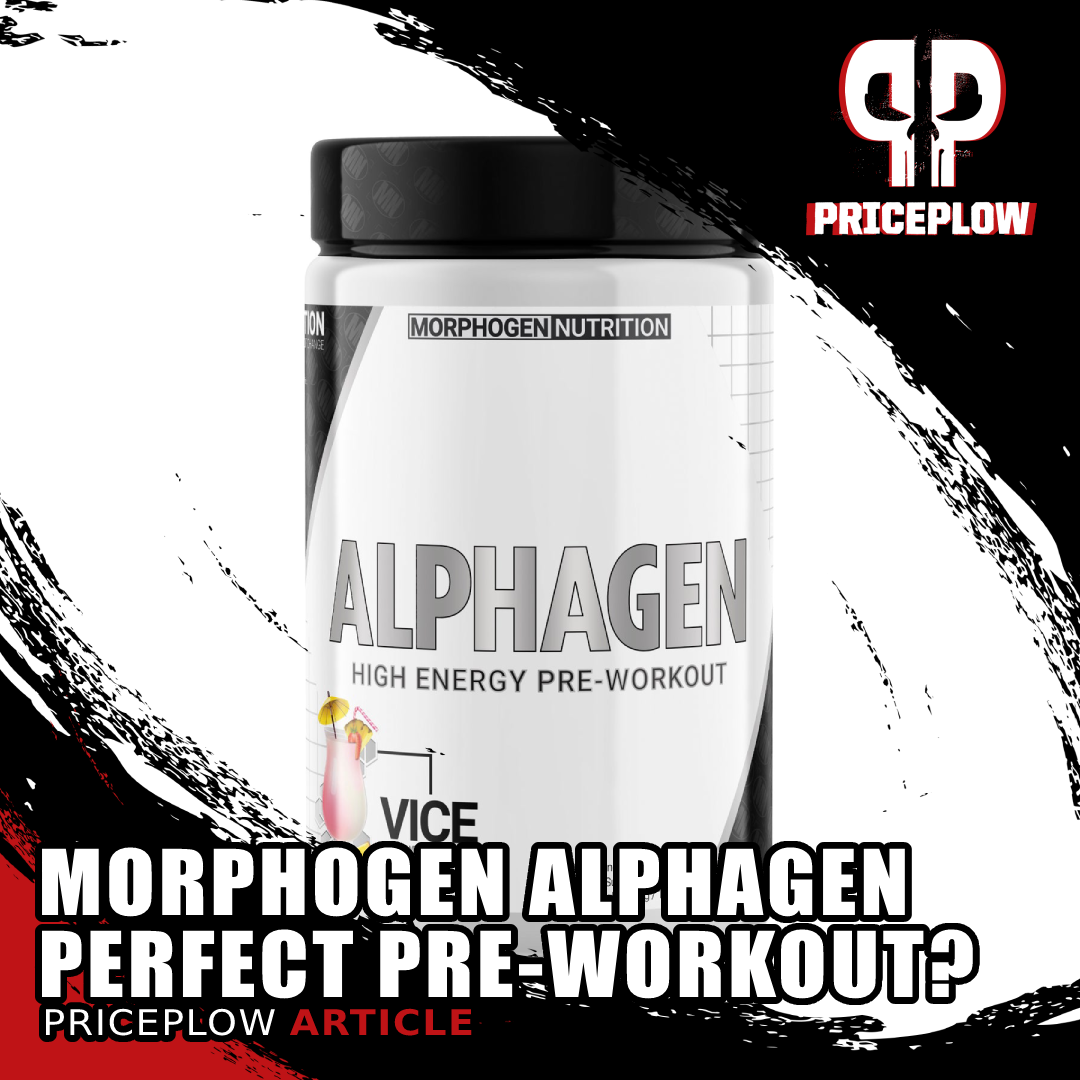
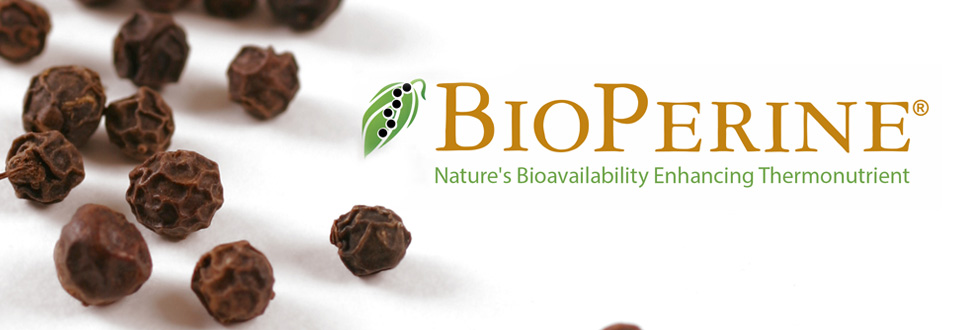
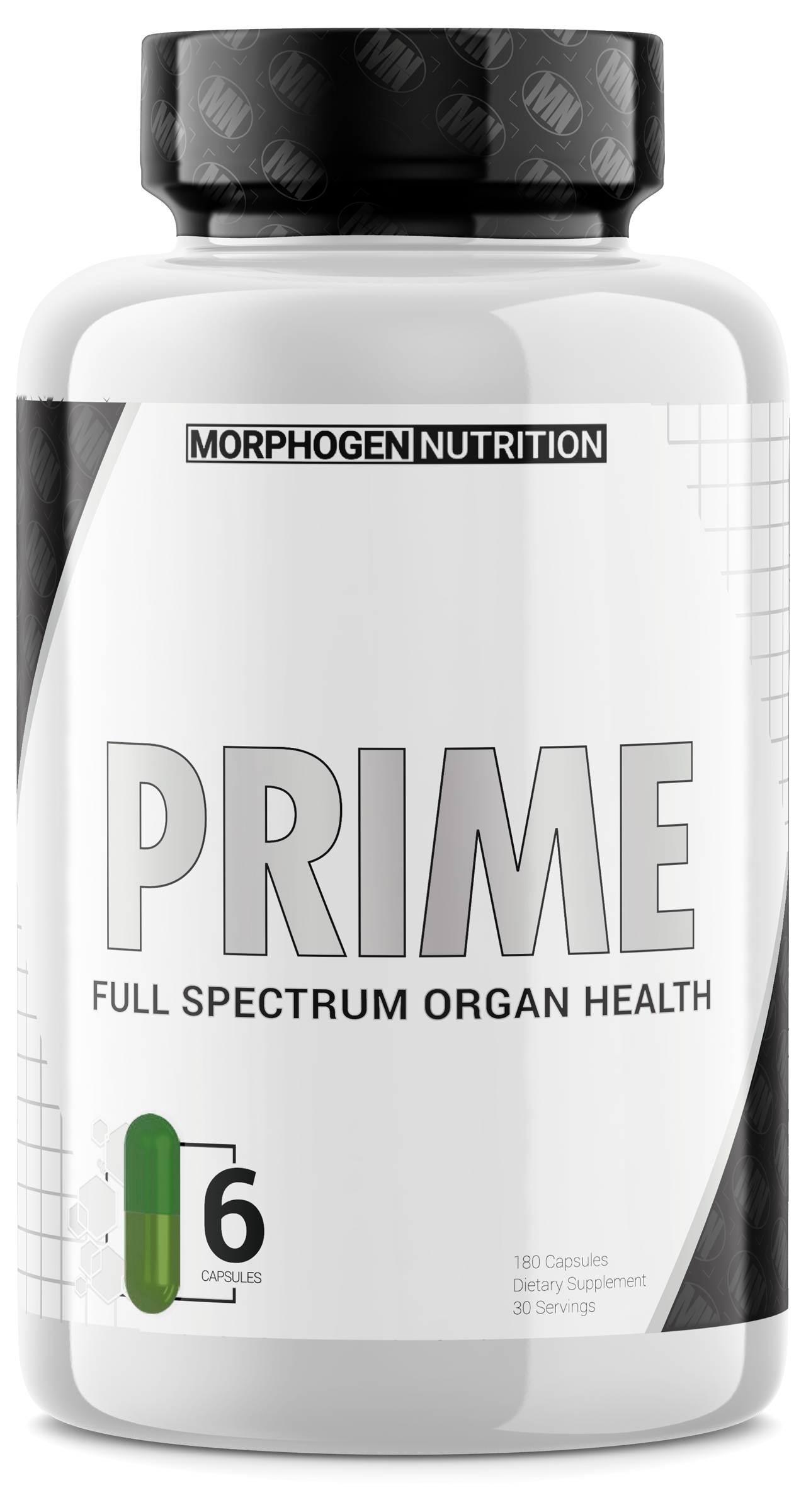


Comments and Discussion (Powered by the PricePlow Forum)